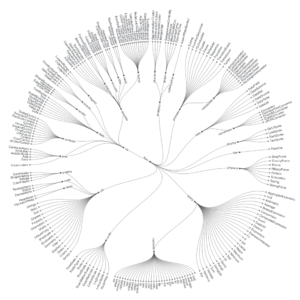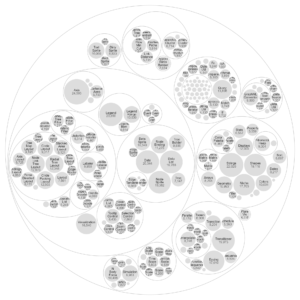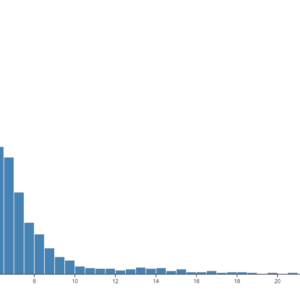Description
An Animated Tree Map is a dynamic and engaging data visualization technique that combines the hierarchical layout of a tree map with animated transitions to convey changes or temporal patterns within the dataset. In this visualization, hierarchical data is represented as nested rectangles, with each rectangle’s size corresponding to a quantitative value and its color often encoding additional categorical information. Unlike static tree maps, animated tree maps use transitions and animations to highlight changes in the dataset over time or to reveal patterns through interactive exploration. These animations can include transitions between different levels of the hierarchy, changes in the size or color of rectangles, or dynamic updates to the layout in response to user interactions. By adding motion and interactivity, animated tree maps enhance the viewer’s understanding of complex data dynamics and temporal trends, making them a powerful tool for data exploration and storytelling.
Uses:
- Financial Analysis: Tracking changes in financial portfolios over time, such as fluctuations in stock prices, asset allocations, and investment performance.
- Epidemiological Surveillance: Visualizing the spread of infectious diseases or the emergence of outbreaks by animating changes in disease incidence rates, geographic distribution, and transmission patterns.
- Supply Chain Monitoring: Monitoring supply chain operations and logistics by visualizing changes in inventory levels, shipment volumes, and delivery routes over time.
- Dynamic Network Visualization: Animating changes in network structures, such as social networks, communication networks, or transportation networks, to reveal evolving connections and interactions.
- Environmental Monitoring: Tracking environmental indicators, such as air quality, water pollution, or deforestation rates, by animating changes in environmental data over time.
- Website Analytics: Visualizing changes in website traffic, user engagement, and content consumption patterns over time to identify trends and inform website optimization strategies.
- Educational Demonstrations: Creating interactive educational tools to teach concepts such as population dynamics, ecological succession, or historical timelines in an engaging and dynamic manner.
- Project Progress Tracking: Monitoring project progress and milestones by animating changes in task completion rates, resource allocations, and project timelines over time.
- Customer Behavior Analysis: Analyzing changes in customer behavior, preferences, and purchasing patterns over time to identify emerging trends and opportunities in marketing and sales.
- Real-time Data Visualization: Displaying real-time data streams, such as sensor data, social media feeds, or financial transactions, in animated tree maps to provide up-to-date insights and situational awareness.
Purposes:
- Temporal Pattern Recognition: Facilitating the recognition of temporal patterns, trends, and anomalies within hierarchical datasets through dynamic animations and transitions.
- Visual Storytelling: Enhancing data storytelling by using animations to guide the viewer through changes in the dataset over time and to emphasize key insights or narratives.
- Interactive Exploration: Supporting interactive exploration and manipulation of hierarchical data by allowing users to control the pace and direction of animations and to interactively filter or zoom into specific parts of the visualization.
- Data-driven Decision Making: Empowering data-driven decision-making processes by providing decision-makers with timely and actionable insights derived from animated visualizations of complex datasets.
- Behavioral Analysis: Understanding changes in user behavior, system dynamics, or environmental conditions through the observation of animated patterns and trends within the data.
- Pattern Discovery: Facilitating the discovery of hidden patterns, correlations, and relationships within hierarchical datasets by visually examining changes in the layout and distribution of data elements over time.
- User Engagement: Increasing user engagement and attention by leveraging the dynamic and interactive nature of animated tree maps to create captivating and immersive data experiences.
- Comparative Analysis: Supporting comparative analysis of different time periods, scenarios, or datasets by animating transitions between multiple states or conditions within the visualization.
- Forecasting and Prediction: Using animated tree maps to visualize historical trends and model predictions to forecast future outcomes or anticipate potential changes in the dataset.
- Data Exploration: Enabling users to explore and discover insights within complex hierarchical datasets by interactively animating changes in the data structure and revealing hidden relationships or patterns.
Only logged in customers who have purchased this product may leave a review.







Reviews
There are no reviews yet.